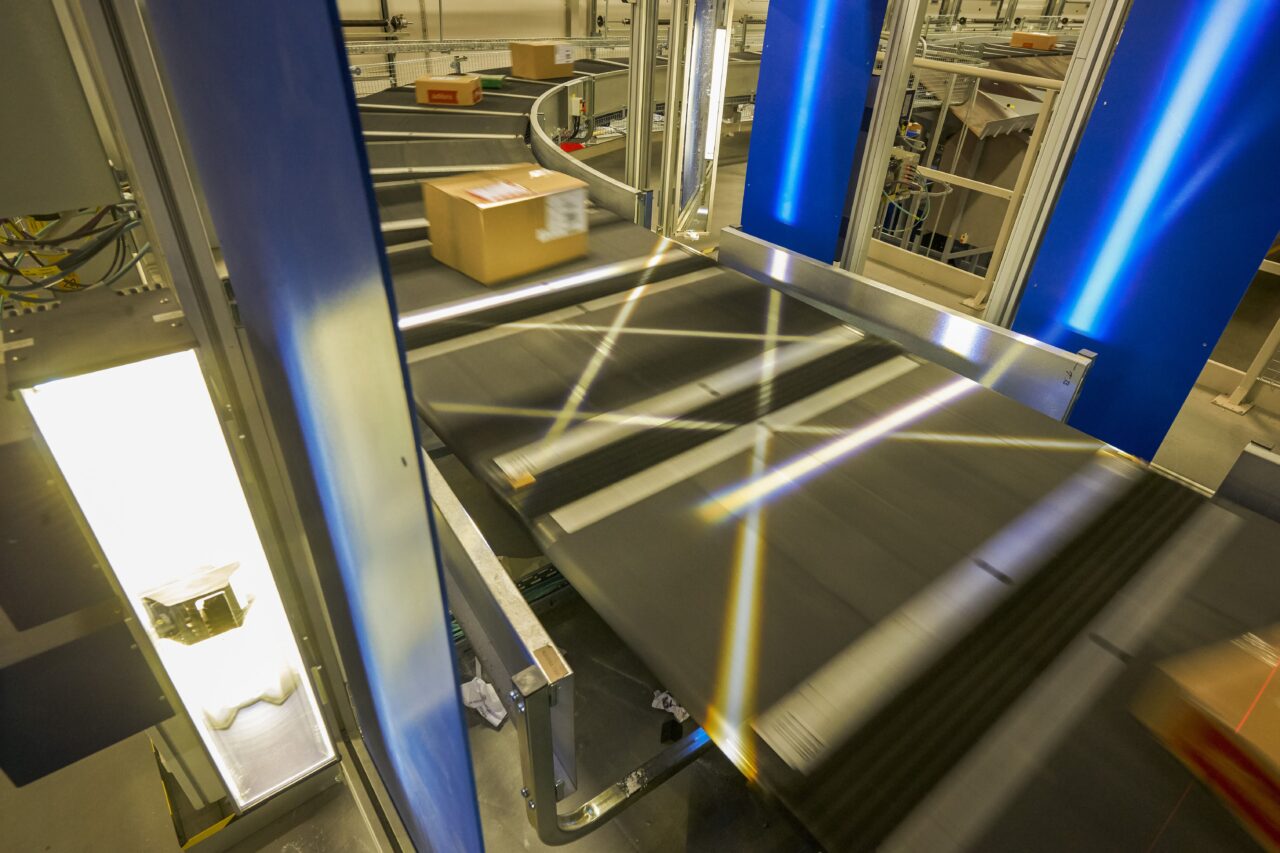Lights off, nobody is home – but this CEP distribution centre is in full swing
Imagine a future in which there are no operators at the CEP distribution centres (DCs) – only you won’t be able to see it, because all the lights will be switched off!

Imagine a future in which there are no operators at the CEP distribution centres (DCs) – only you won’t be able to see it, because all the lights will be switched off!
In the ‘Dark Depos’ of the future, all processes will be fully automated – manual interventions a distant memory of a recruitment problem that once pained the industry.
Not only is the ‘Lights Out’ concept generating traction as a solution to the lack of trained personnel in both the Warehouse & Distribution and CEP industries – part of an anticipated global shortage of 85 million workers by 2030 – but it also has the potential to help operators reduce their costs and environmental impact.
However, despite the obvious benefits, most major CEP operators are stalling, preferring to wait for one of their rivals to make the first move and invest in the required technology.
Nobody wants to be the guinea pig and take what is considered a big risk at a time when there is such high competition in the sector and so much uncertainty in general.
In some countries in Europe, especially in the vicinity of the bigger cities where the cost of living has been soaring of late, it’s more or less impossible to find operators to work at a distribution centre.
Instead of offering the workers considerably more to do the job, operators are finding cheaper ways to recruit staff – but still at a significantly higher cost than 10-20 years ago.
CEP operators are also increasingly favouring agency workers. In light of how a throughput rate flattens and peaks during a typical week, the operators are finding that strategically using agency workers is a better fit for their demand than permanent workers who cost more due to the terms of their fixed contracts.
This new generation of workers lacks experience – and sometimes even proficiency in the local language – and this reduces the competence level. The utilisation of agency workers also requires that operational system processes must be easy and quick to learn, which reduces the amount of training needed.

In the Dark Depos, the biggest challenge is the need for a swift identification of the parcels’ size, shape and form to ascertain whether they are uniform or non-uniform.
For example, the non-uniform shape of a car exhaust pipe is harder to automatically sort than a uniform box, as are fragile items.
Standard automated sortation systems struggle to handle non-uniform items, so special devices are needed to extract them from the automated item flow before they create problems.
Robotic and camera devices utilising cloud-based (shape or form-based) software will enable the system to recognise the parcels that should be handled differently or with care.
For example, a robotic solution could be set up to place non-uniform items into a uniform transport device, such as a tote, to make it easier to transport to the delivery truck, where it can be remerged with the load.
Initially, such a system will require at least one operator in a control centre to monitor the equipment using infrared camera technology. As Murphy’s Law likes to remind us, interventions are inevitable!
No personnel need to be present in the DCs, enabling CEP operators to make considerable savings on the cost of their lighting and heating.
Beyond the light needed to carry out maintenance requirements, the lights can be permanently switched off during operations.
A DC with a traditional lighting system (one that doesn’t use LED lights) can expect an annual bill of close to $10,000.
Operators of DCs without workers can also expect improved productivity thanks to a steadier workflow and a reduced carbon footprint.
Such benefits can be a godsend for former national postal carriers, now privatised but still held back by regulatory obligations to fulfil criteria, such as guaranteeing a next-day delivery service for domestic letter mail.
But first they must spend, and the required investment in the hardware continues to put the majority off, even though cloud-based OCR software used to identify packages is strictly pay-as-you-go and increasingly affordable.
With 12 more months of global uncertainty looking likely, few in the industry are anticipating any major outlays until 2025.
Before then, whoever does make the move will be getting a headstart on their rivals by investing in automotive technology that will soon become the industry norm.
High energy, recruitment and labour costs are three headaches CEP operators can solve by implementing fully-automated sortation systems at their DCs. The hardware may be a bit expensive, but the cloud-based software is increasingly affordable, and operators can be rightly confident their OPEX savings will make their initial CAPEX look like a sound investment in just a few years.